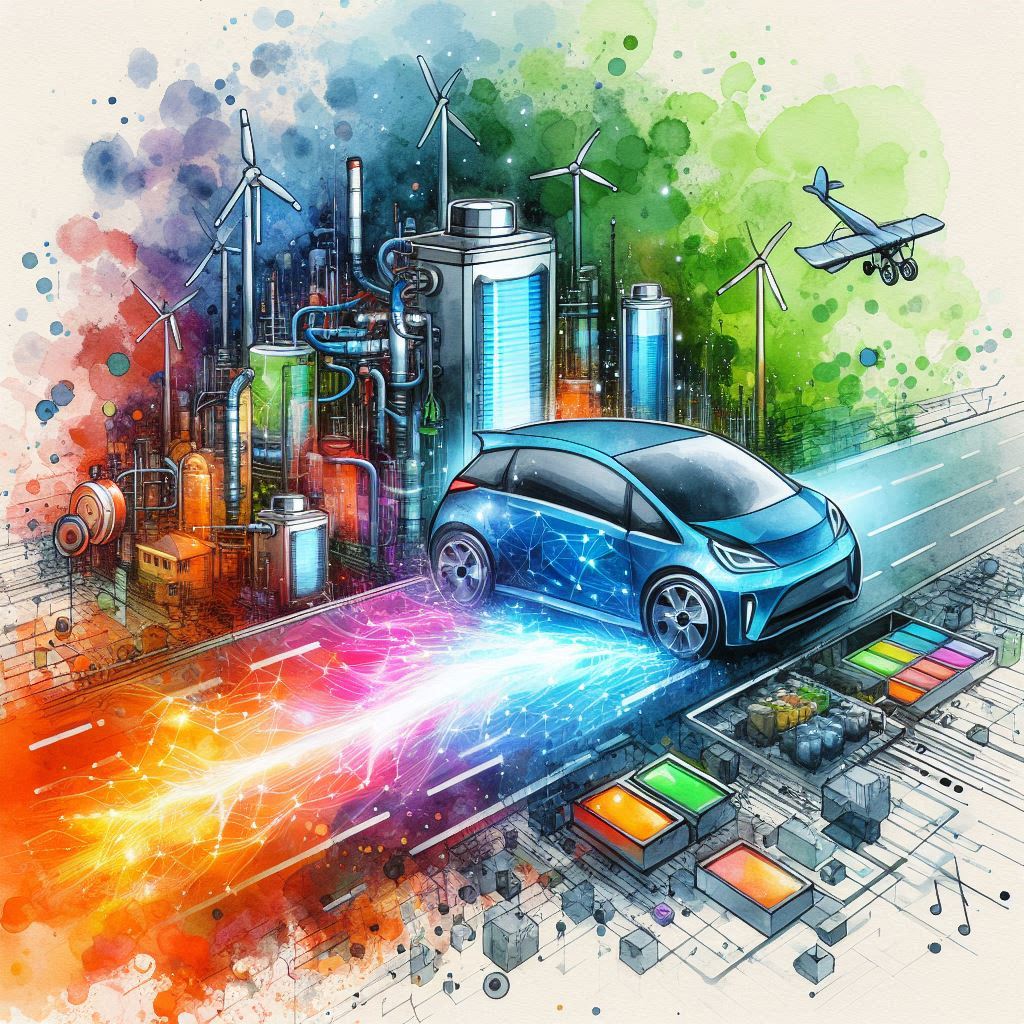Hydrogen fuel cells are devices that generate electricity through an electrochemical reaction between hydrogen and oxygen. This reaction produces only water and heat as by-products, making it a clean energy source.
The concept isn’t new. In fact, the basic principles of fuel cells were discovered in the early 19th century. But it wasn’t until recent decades that advancements in technology and concerns about environmental sustainability pushed hydrogen fuel cells into the spotlight.
Why does this matter? With rising concerns about global warming and pollution, there’s a growing need for sustainable and efficient energy sources. Hydrogen fuel cells offer a promising solution, combining high efficiency with minimal environmental impact.
When comparing hydrogen fuel cells to other alternative energy sources like solar and wind, it’s clear that each has its unique benefits and drawbacks. For instance, while solar panels depend on sunlight, hydrogen fuel cells can generate power continuously, as long as there’s a supply of hydrogen. This makes them an attractive option for various applications where a steady power supply is crucial.
The Science Behind Hydrogen Fuel Cells

Hydrogen fuel cells are composed of several key components: an anode, a cathode, and an electrolyte membrane. Hydrogen gas is fed into the anode, where it’s split into protons and electrons. These protons pass through the electrolyte membrane to the cathode, while the electrons create an electric current as they travel through an external circuit.
This electrochemical process is the heart of how hydrogen fuel cells generate electricity. The basic idea is pretty straightforward: hydrogen molecules are broken down, and the resulting particles are used to produce electrical energy. Despite this simplicity, the technology involves some complex chemistry and engineering to ensure efficiency and reliability.
There are different types of hydrogen fuel cells, each suited to different applications. The most common type is the Proton Exchange Membrane Fuel Cell (PEMFC), known for its versatility and efficiency. Solid Oxide Fuel Cells (SOFCs) operate at higher temperatures and are typically used in industrial settings. Each type has its own pros and cons, so selecting the right one depends on the specific requirements.
Efficiency is a key factor in fuel cell performance. The efficiency of hydrogen fuel cells can range from 40% to 60%, depending on the technology and application. That’s significantly higher than traditional internal combustion engines, which usually have efficiencies around 25% to 30%. However, the efficiency can be influenced by various factors, including the purity of the hydrogen and the operating conditions.
Applications and Real-World Use Cases

Hydrogen fuel cells are making a significant impact in various fields, particularly in transportation. Fuel cell vehicles (FCVs) like cars, buses, and trains are gaining traction due to their efficiency and minimal emissions. For instance, several major cities are introducing hydrogen-powered buses to cut down on air pollution and greenhouse gases.
In addition to transportation, hydrogen fuel cells are being utilized in stationary power generation. These systems can provide electricity for residential, commercial, and industrial applications. They offer reliability and can operate independently of the grid, making them an excellent choice for remote areas or places with unstable power supply.
Portable and backup power systems also benefit from hydrogen fuel cell technology. These cells are used in everything from small portable generators to large-scale emergency power systems. Their ability to provide uninterrupted power makes them valuable in critical situations, like hospitals and data centers, where power failures can have serious consequences.
The aerospace and marine industries are exploring innovative uses for hydrogen fuel cells. In aerospace, fuel cells can potentially power drones and other unmanned aerial vehicles, extending their range and reducing their environmental footprint. In the marine sector, hydrogen fuel cells can drive ships and submarines, offering a quieter and eco-friendly alternative to traditional marine engines.
Future Prospects and Challenges

Several promising technological advancements are on the horizon for hydrogen fuel cells. Researchers are exploring new materials to improve the efficiency and lifespan of the cells, making them more cost-effective and durable. Innovations in hydrogen production and storage are also critical areas of progress, aiming to make the hydrogen supply chain more sustainable and accessible.
The economic landscape for hydrogen fuel cells is evolving. As technology matures, production costs are expected to decline, making fuel cells more competitive with traditional energy sources. Investment in infrastructure, such as hydrogen refueling stations, is essential for widespread adoption.
However, there are challenges to overcome. The environmental impact of hydrogen production is a concern, especially when it involves fossil fuels. Green hydrogen, produced using renewable energy, offers a solution but requires significant investment and development.
Policy and regulatory frameworks play a crucial role in the deployment of hydrogen fuel cells. Governments worldwide are introducing incentives and regulations to support the transition to clean energy. International collaborations and agreements are also helping to drive innovation and standardization in the industry.

